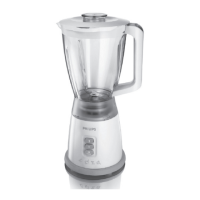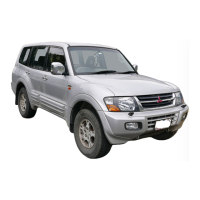HEATER, AIR CONDITIONER AND VENTILATION ± On-vehicle Service
55-13
8. Start the engine.
9. Operate the air conditioner and set at the lowest
temperature (MAX. COOL).
10. Fix the engine speed at 1,500 r/min.
11. Tighten the handle of the adaptor valve (valve open), and
replenish refrigerant while checking the quantity through
the sight glass.
Caution
If the service can is inverted, liquid refrigerant may
be draw into the compressor damaging it by liquid
compression. Keep the service can upright to ensure
that refrigerant is changed in gas state.
12. After replenishing is completed, turn the handle of the
adaptor valve all the way back (valve close), and remove
the quick joint.
NOTE
When there is remainder of refrigerant in the service can,
keep it for next use with the charge value and the valve
of the adaptor valve being closed.
DISCHARGING SYSTEM
1. Run the engine at an engine speed of 1,200± 1,500 r/min
for approximately 5 minutes with the A/C operating to
return to the oil.
NOTE
Returning the oil will be more effective if it is done while
driving.
2. Stop the engine.
3. Connect the charging hose (blue) to the adaptor valve
with its handle turned back all the way (valve closed).
4. Connect the quick joint to the charging hose (blue).
5. Install the quick joint to the low-pressure service valve.
NOTE
The low-pressure service valve should be connected to
the suction hose.
Caution
To connect the quick joint, press section ªAº firmly
against the service valve until a click is heard.
When connecting, run your hand along the hose while
pressing to ensure that there are no bends in the hose.
6. Place the adaptor valve inside the container and discharge
the refrigerant by opening the handle gradually so that
oil does not gush out.
NOTE
Any oil remaining in the container should be returned to
the A/C system.
Charging valve
Service can (Refriger-
ant container)
Low-pressure
service valve
Sleeve
Charging hose (blue)
Quick joint
Low-pressure
service valve
Oil
Adaptor valve
A

